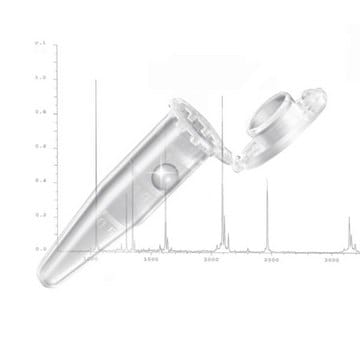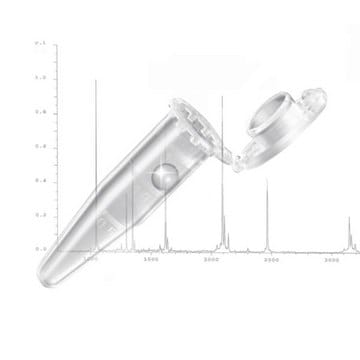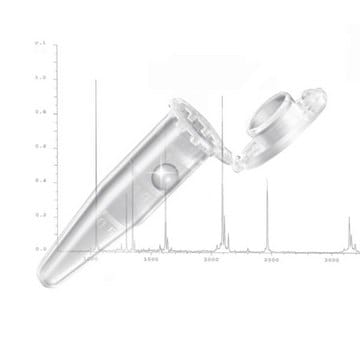EP022431102
Eppendorf® Protein LoBind tubes
capacity 2.0 mL, PCR clean, pkg of 100 ea (2 x 50ea)
About This Item
Recommended Products
material
(push fit)
polypropylene cap
sterility
non-sterile
feature
PCR clean
packaging
pkg of 100 ea (2 x 50ea)
manufacturer/tradename
Eppendorf® 022431102
parameter
-18,000 × g max. RCF
capacity
2.0 mL
diam.
10.5 mm
color
clear
suitability
suitable for PCR
binding type
low binding surface
Looking for similar products? Visit Product Comparison Guide
General description
- Eppendorf LoBind material ensures optimized sample recovery for improved assay results
- Free of surface coating (e.g., silicone) to minimize the risk of sample interference
- Lot-certified PCR clean purity grade: free of human DNA, DNase, RNase and PCR inhibitors
- Available in tube, microplate, and deepwell plate formats for easy-up scaling
- Precise lid sealing to minimize evaporation
Features and Benefits
Legal Information
Choose from one of the most recent versions:
Certificates of Analysis (COA)
It looks like we've run into a problem, but you can still download Certificates of Analysis from our Documents section.
If you need assistance, please contact Customer Support.
Already Own This Product?
Find documentation for the products that you have recently purchased in the Document Library.
Our team of scientists has experience in all areas of research including Life Science, Material Science, Chemical Synthesis, Chromatography, Analytical and many others.
Contact Technical Service








